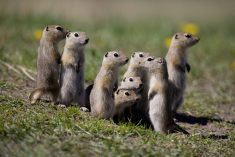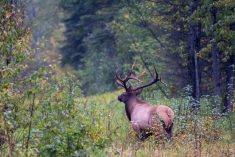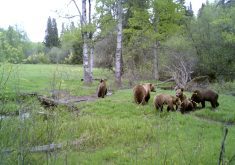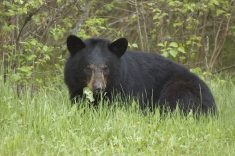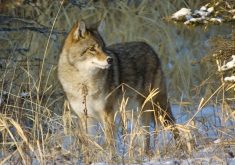Miles and Sheri Anderson and family of Fir Mountain, Sask., are the recipients of The Environmental Stewardship Award (TESA) for Saskatchewan presented during the Saskatchewan Stock Growers Association’s convention at Regina.
Robin Bloom, a wildlife biologist with Environment Canada who oversees federal support for Species at Risk projects supported the Andersons’ nomination, acknowledging the family not only for facilitating one of the last remaining populations of Greater sage-grouse in Canada, but for facilitating research. The family’s passion for what they do has led to rangeland people and government departments co-operating for the betterment of the birds and other at-risk species that co-exist on the ranch.
Read Also

What to know before you go to Agribition 2025
If you’re attending Agribition 2025, this is the place to find out about tickets, dates and what’s happening this year.
In 2011, funding became available to people who live on the land to find out what they do that attracts certain at-risk and threatened species.
Greater sage-grouse have been returning to the Anderson Ranch spring after spring, generation upon generation to mate, nest and rear their brood in a safe habitat. Naturally, the Andersons were interested in co-operating on the project to learn more about this bird that has been as much a part of their native range as the cow herd.
Bloom, whose role has been to help measure the results, says there is a strong relationship between how the Andersons ranch and the appearance of the sage-grouse on their land.
In our March 2016 article, “Ranching for beef and species-at-risk” Anderson explained how a slow rotation across the range creates a patchwork of grazed and ungrazed areas. This provides a balance of the two habitats that the birds need in summer: patches of lightly grazed sagebrush that provides cover for nesting with nearby patches of heavier-grazed grass where the young chicks can find the food they need. Ant piles are a treasure trove of protein and moisture. Other insects and forbs complete the diet because Greater sage-grouse don’t have gizzards to digest seeds.
“Our goal isn’t just to grow lots of grass for cows, but to also have biodiversity, which is part of the reason the Greater sage-grouse are there,” Anderson says. “The cows are a tool to create habitat and tweaking management can make it better for something other than cows.”
Bloom credits the Andersons for the effort that was required to gain the trust and respect of government agencies and the conservation community. The family is now providing cows to graze on native grass across the fence in Grasslands National Park to try and create a more biodiverse habitat for Greater sage-grouse and other wildlife.



